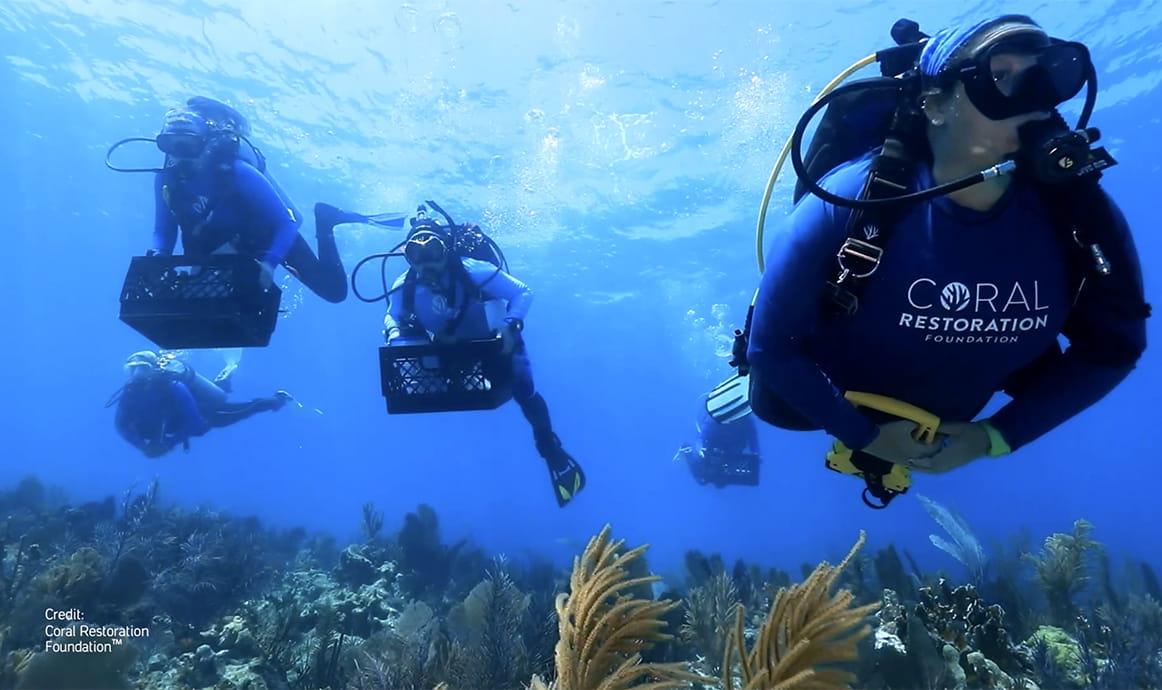
Supporting biodiversity
Caring for coral
Aramco is helping to rescue and rebuild reefs in the coastal waters of the United States, the Caribbean and Mexico.
Coral reefs are home to numerous marine species and act as a natural barrier against coastal erosion for countless communities.
Aramco is helping to rescue and rebuild reefs in the coastal waters of the United States, the Caribbean and Mexico through grants by the National Fish and Wildlife Foundation's (NFWF) Coral Reef Conservation Fund. Aramco supports grants in community-based efforts to improve the health and resilience of coral reefs in Florida, Hawai'i, Guam, American Samoa, and the Caribbean.
This content is blocked
You need to give permission.
